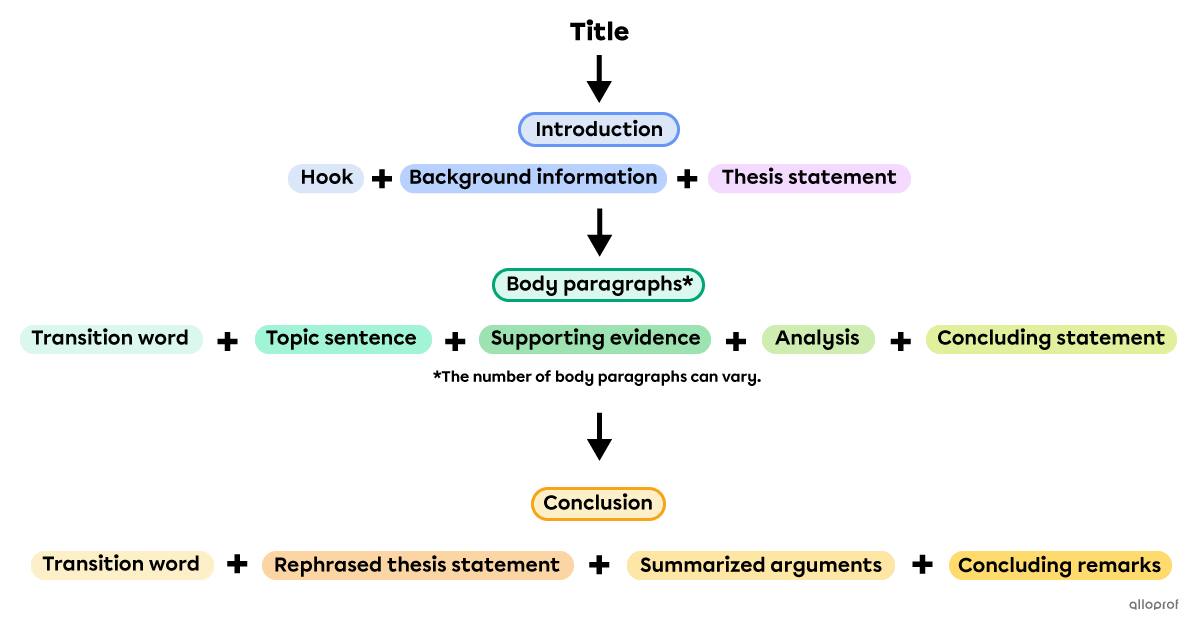Argumentative texts are types of writing that require authors to defend a point of view on a topic.
Topics can be general and relate to philosophy, science, and society for example, or very personal and relate to issues close to the writer.
In argumentative texts, authors take a clear position on a topic and defend their opinion with credible arguments.
There are several types of argumentative texts. When deciding which one to write, authors must consider their:
|
goal |
What is the intention of the text? |
To share a point of view |
|
To provoke thought and discussion |
||
|
To convince/persuade an audience of a personal opinion |
||
|
To convince/persuade an audience to accept a certain perspective as the truth |
||
|
audience |
Who is the text intended for? |
A wide audience: teenagers, scientists, government officials… |
|
A specific individual: a parent, an exchange student, the prime minister… |
Although argumentative texts have their own particularities, they always follow the same basic structure.
Argumentative texts contain three parts (click on the links to learn more):

Sometimes, argumentative texts are also called essays. An essay is a piece of writing about a particular subject. Essays can also be called texts or papers.
|
Definition |
Question(s) to ask yourself |
Position in the text |
|
Evidence-based explanation that backs up an argument. |
How can I prove that my evidence has value? |
In body paragraphs, after the evidence. |
|
Definition |
Question(s) to ask yourself |
Position in the text |
|
Any necessary information providing a context for the reader. |
How can I familiarize the readers with the topic? |
In the introduction, right after the hook. |
|
Definition |
Question(s) to ask yourself |
Position in the text |
|
Sentence presenting the argument of a paragraph. |
What is the argument for the paragraph? |
First sentence of each body paragraph. |
|
Definition |
Question(s) to ask yourself |
Position in the text |
|
Argument that addresses an opposing point of view. |
How can I convince my readers that I know the other point of view is wrong? |
In persuasive essays, inside body paragraphs. |
|
Definition |
Question(s) to ask yourself |
Position in the text |
|
Sentence that summarizes the main idea of a body paragraph. |
Does the sentence summarize my paragraph? |
At the end of each body paragraph |
|
Definition |
Question(s) to ask yourself |
Position in the text |
|
Recommendation, reflection, prediction, explanation, question or rhetorical question. |
How can I finish my essay in a way that my readers will keep pondering? |
Last sentence of the conclusion. |
|
Definition |
Question(s) to ask yourself |
Position in the text |
|
Factual, logical, statistical, or anecdotal information that backs up an argument. |
How can I prove that I have done my research and thought critically about my topic? |
In the body paragraphs, after the topic sentence. |
|
Definition |
Question(s) to ask yourself |
Position in the text |
|
Attention grabber/interesting first sentence |
How can I captivate my reader’s attention? |
First sentence of the introduction. |
|
Definition |
Question(s) to ask yourself |
Position in the text |
|
Summary of the overall arguments to be explained in the essay. |
Why do I have my opinion? |
Final part of the thesis statement. |
|
Definition |
Question(s) to ask yourself |
Position in the text |
|
Question that encourages discussion about a subject or theme. |
What is my position on the question? |
Given to students during the prewriting step. |
|
Definition |
Question(s) to ask yourself |
Position in the text |
|
Word or phrase used to make a transition/express the relationship between two ideas/sections/paragraphs. |
What is the link between the two ideas? |
At the beginning of the conclusion |
Visit the Transition Words concept sheet to learn more.
|
Definition |
Question(s) to ask yourself |
Position in the text |
|
Sentence that summarizes the central point of an essay. It contains the topic, the main claim and an overview of the reasoning. |
What is the topic of my text? |
Final part of the introduction |